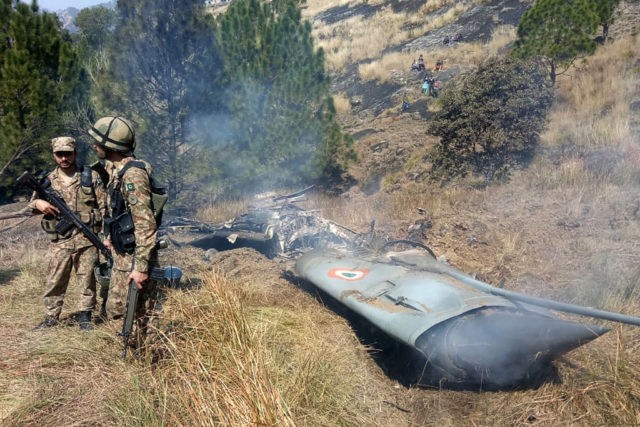India and Pakistan are teetering on the brink of war again.
This is a fairly regular occurrence: since Partition in 1947, there have been four actual Indo-Pakistan wars (1947, 1965, 1971 and 1999). The fact that most of us aren’t aware of this says more about our ignorance of Indian subcontinental geopolitics than it does about the seriousness of the conflicts. The seventeen-day war in 1965, for example, saw the largest tank battle since the Second World War; the one in 1971 saw Pakistan lose half its navy, a quarter of its air force and a third of its army.
The worry about this latest bout of aggression – which started with the St Valentine’s Day massacre of 40 Indian paramilitary troops in Kashmir by a suicide bomber and has now escalated with the shooting down of an Indian fighter jet – is that both nations are so much more populous, powerful and swaggeringly aggressive, and have points to prove.
India has a population of 1.3 billion.
Pakistan’s is 208 million.
Imagine if it escalates further; suppose it, God forbid, were to go nuclear. The fall-out, in both senses, would be astronomical. In India and Pakistan, of course, the suffering would be horrendous. Thereafter, it would lead to greatest refugee crisis in history.
At the end of the Second World War between 11 million and 20 million were displaced.
During the Partition of India and Pakistan around 14 million people were displaced.
Around the world today there are – according to UNHCR – around 68.5 million displaced people.
But this would be as nothing to the potential refugee problem should there be a hot war between India and Pakistan.
To appreciate how bad it would be, we have only to extrapolate from what happened after the wars in Iraq and Syria.
The Iraq wars have reportedly displaced at least three million people and left 8.7 million people in need of humanitarian aid; the Syrian war has driven five million refugees outside Syria and displaced another six million people within its borders.
Syria had a pre-war population of 22 million. So that’s nearly a quarter of the population which fled the country.
One quarter of the India/Pakistan population comes to around 375 million. Obviously – or at least hopefully – the number of refugees would be a fraction of that. But even if it were only one tenth of one quarter, that would still be 37.5 million displaced people.
And guess where most of them would try to come. What they’d be looking for is some European country where they had some kind of history – a common language, obviously, which would be English; but also, ideally, one which had bequeathed them its administrative structures, legal codes and so on. Oh, and also, one where they had lots and lots of relatives already settled – many in communities so charmingly untainted by the host culture you might as well be in downtown Lahore or Bombay.
Gosh, what country could possibly fit that bill?
Still, amid all the misery it would cause, I can think of at least one tiny ray of sunshine.
As we learned from the recent BBC documentary series Inside Europe: Ten Years of Turmoil, nothing has threatened the stability of the European Union more than 2015 refugee crisis. But the numbers then were in the low millions.
A Pakistan-India war would lead to a refugee crisis in the tens of millions. We know this because even without the handy excuse of a war, migrants from Pakistan and India are already being smuggled into Europe via the Balkan route.
It would be a cataclysm that not even the combined forces of Angela Merkel, Emmanuel Macron, Martin Selmayr, Jean Claude Juncker and Guy Verhofstadt could survive. A tantalising thought. But not quite tantalising enough, I fear, for us all to be egging India and Pakistan on towards a proper shooting war…

COMMENTS
Please let us know if you're having issues with commenting.